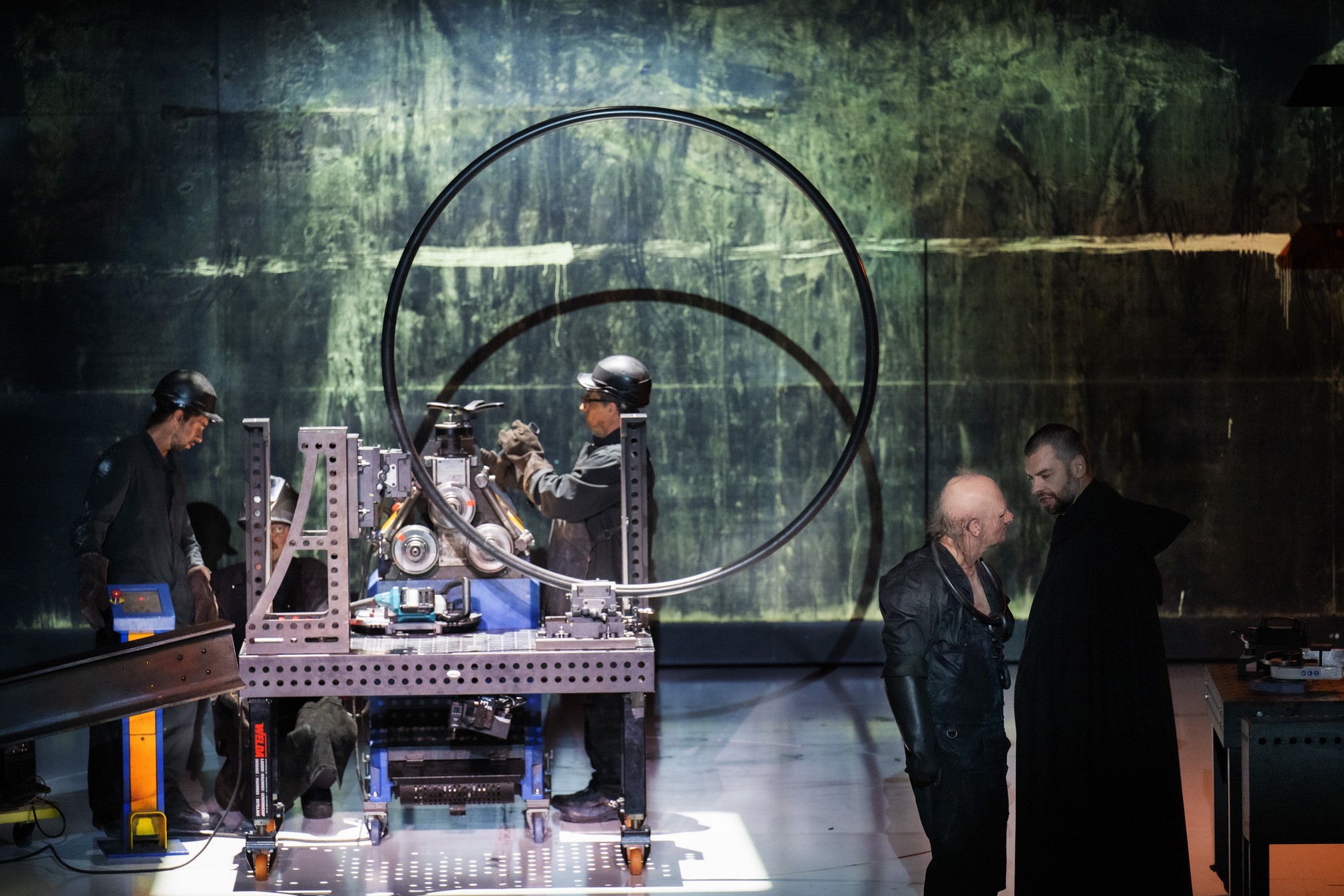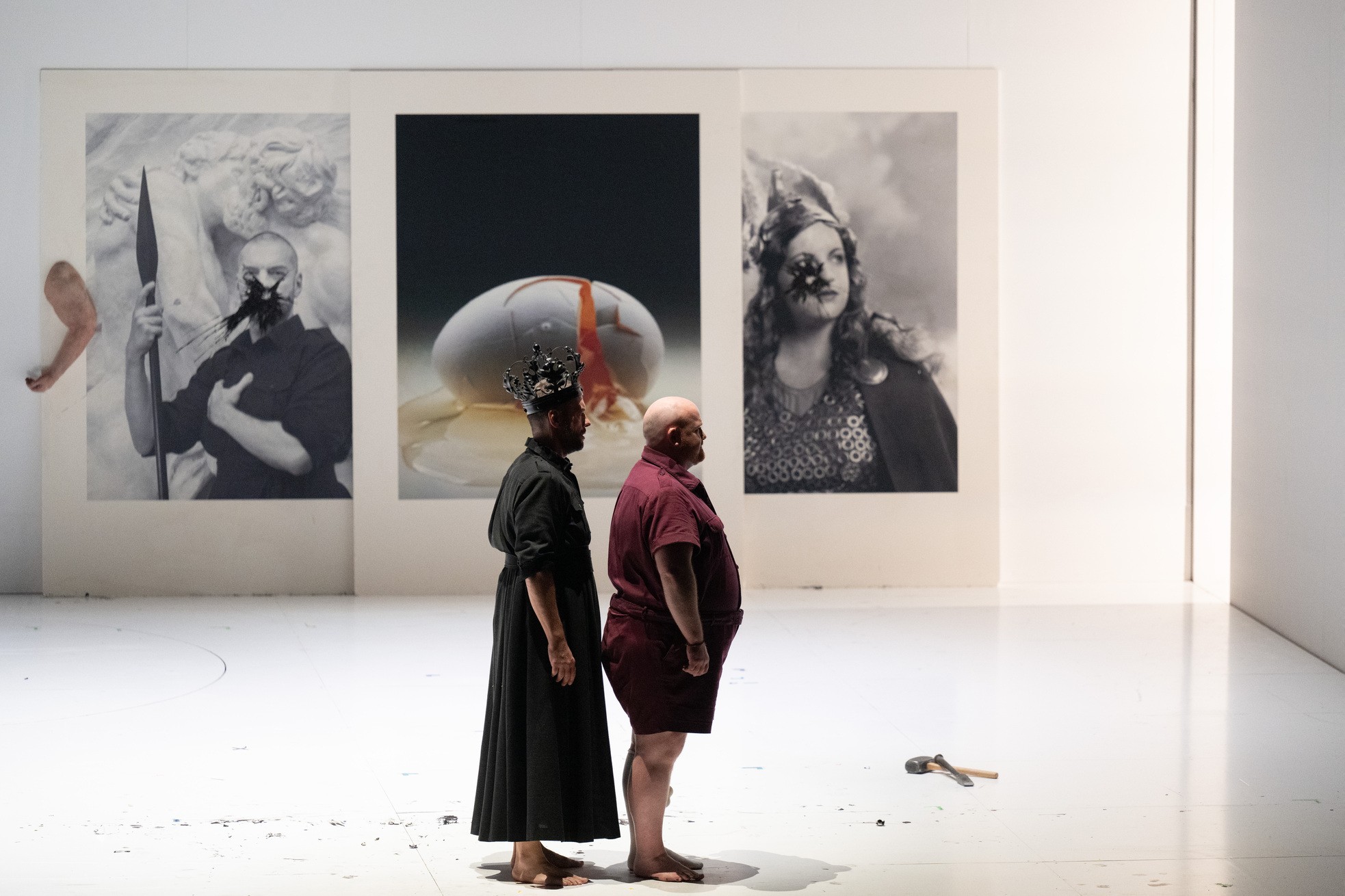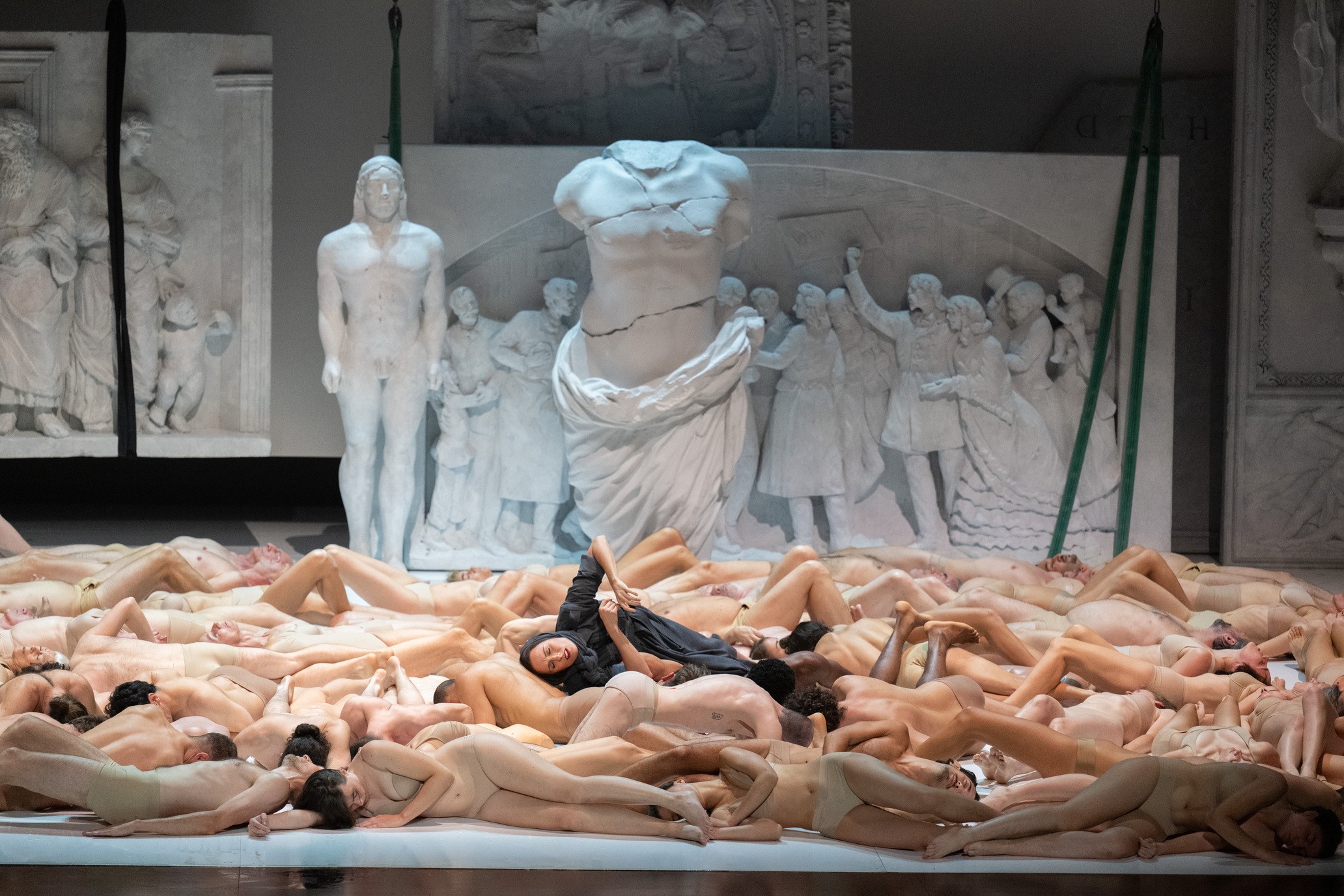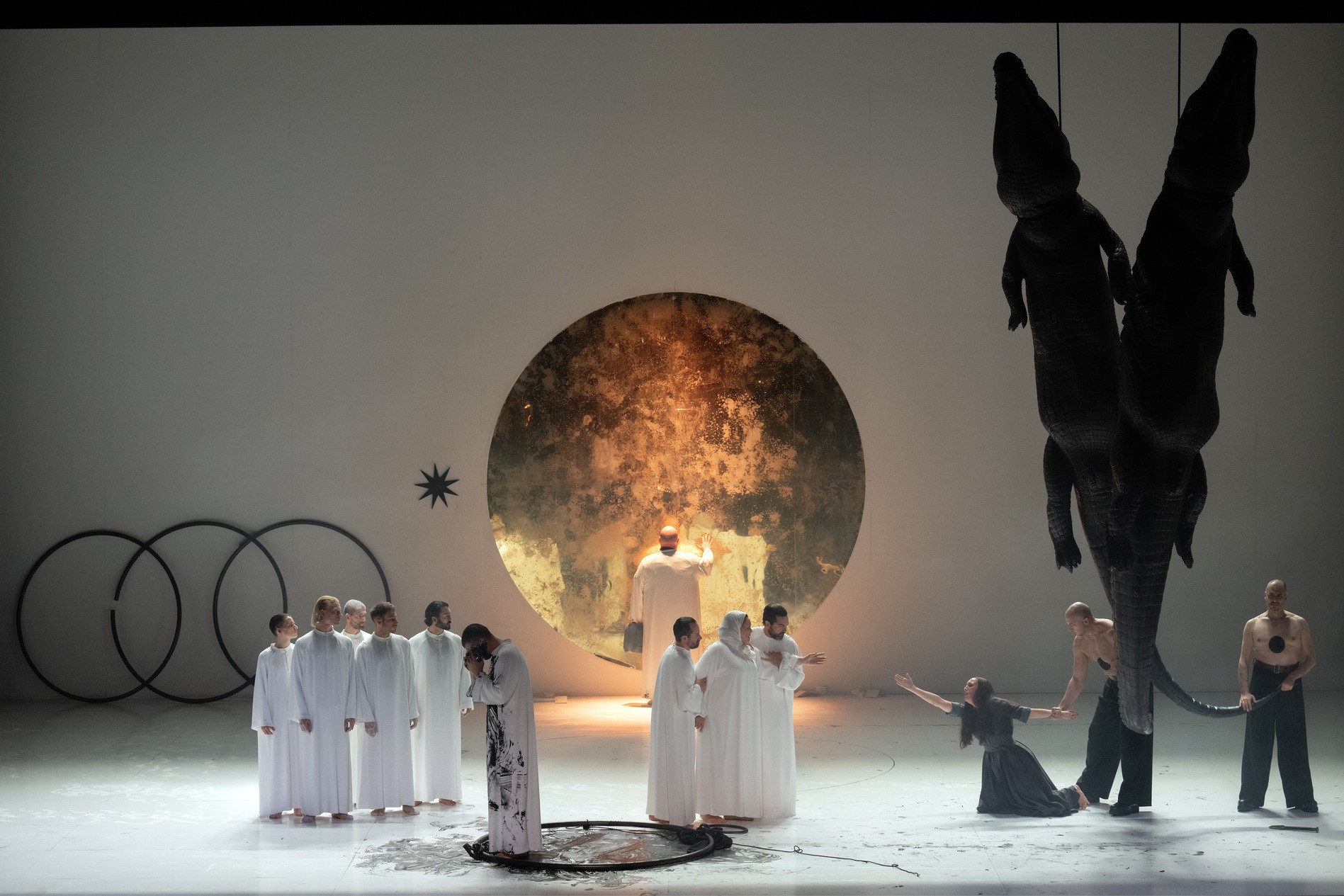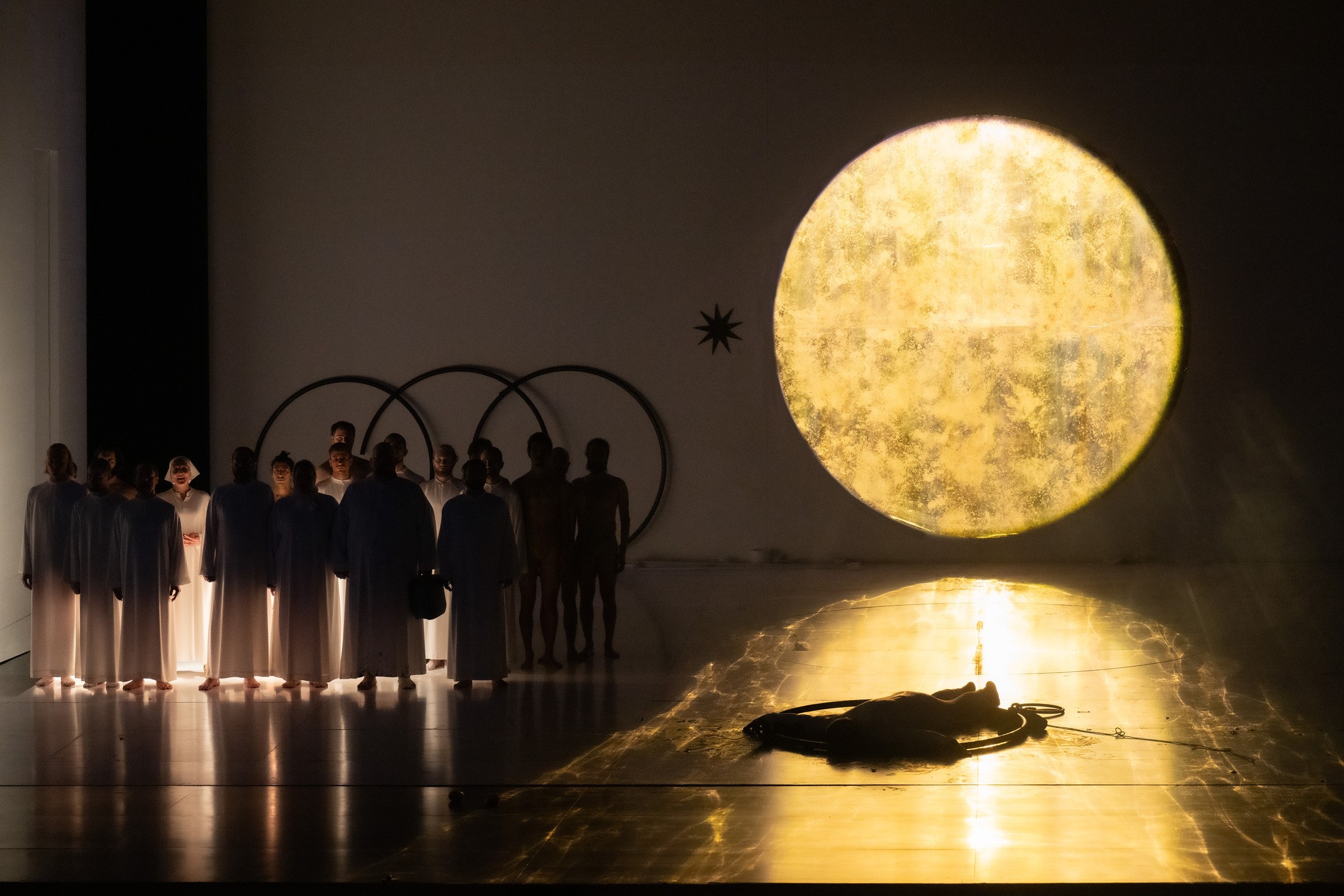Der Ring des Nibelungen – Das Rheingold
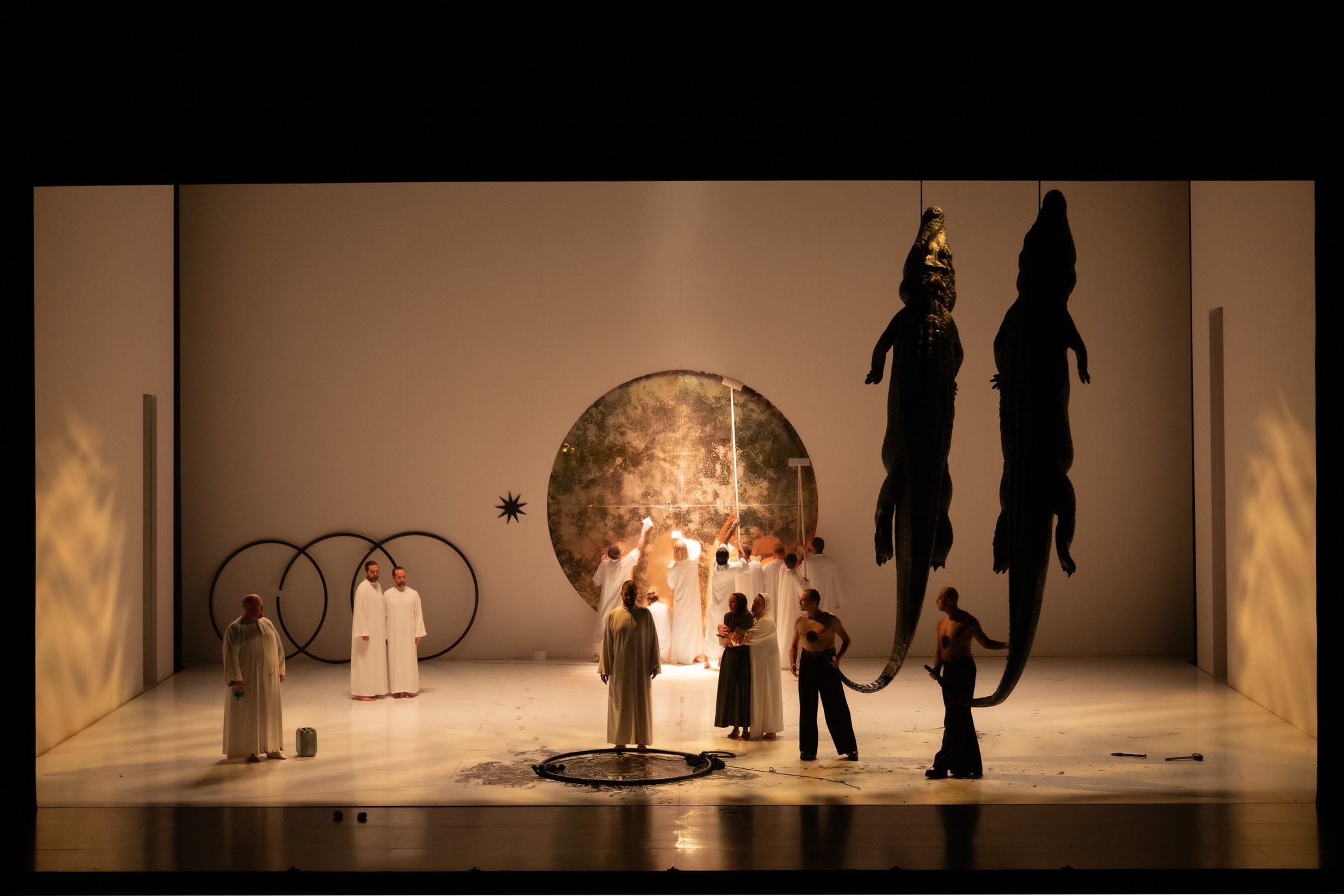
Text und Musik: Richard Wagner
Conductor: Alain Altinoglu
Director, Set, Costume & Lighting Designer: Romeo Castellucci
Dramaturg: Christian Longchamp
Artistic Collaborator: Maxi Menja Lehmann
Set Design Collaborator: Paola Villani
Costume Design Collaborator: Clara Strasser
Lighting Collaborator: Benedikt Zehm
Choreography: Cindy Van Acker
Wotan: Gábor Bretz
Donner: Andrew Foster-Williams
Froh: Julian Hubbard
Loge: Nicky Spence
Fricka: Marie-Nicole Lemieux
Freia: Anett Fritsch
Erda: Nora Gubischa
Lberich: Scott Hendricks
Mime: Peter Hoare
Fasolt: Ante Jerkunica
Fafner: Wilhelm Schwinghammer
Woglinde: Eleonore Marguerre
Wellgunde: Jelena Kordić
Flosshilde: Christel Loetzsch
La Monnaie Symphony Orchestra
Production LA MONNAIE
Coproduction GRAN TEATRO DEL LICEU (Barcelona)
In co-production with Shelter Prod and Prospero MM Productions
With the support of Taxshelter.be and ING
With the support of the Belgian Federal Government's Tax Shelter
In the summer of 1876, a decisive new chapter opened in the history of musical theatre.
The premiere of Der Ring des Nibelungen in the specially built Bayreuth Festspielhaus was an aesthetic, philosophical and above all artistic revolution.
During this ‘stage festival play’ – consisting of Das Rheingold, Die Walküre, Siegfried and Götterdämmerung – Richard Wagner set out the principles of his new doctrine, inspired by ancient tragedy, in an attempt to unite art and society.
The Gesamtkunstwerk, the total work of art stemming from ancient Greece, was reborn from its ashes!
Wagner preferred the term ‘music drama’ to ‘opera’, a notion that he felt had been hollowed out insofar as the means of expression (music) had become the object of expression to the detriment of the drama.
Here, all art forms, including music, theatre and poetry, are brought together to create, conjointly, the drama.
In addition, the poet composer wrote four libretti, giving words a fundamental role in both the theatrical and musical expression. For this purpose, he drew on Nordic (Germanic and Scandinavian) mythology, employing thirty-four characters to tell of the perversion of the world, brought about by the renunciation of love in order to gain power.
To achieve the linguistic unification of this colossal score, Wagner put an end to the predominance of the singers and of the voice by granting the orchestra a decisive place – that of narrator, which the Greeks reserved for the ancient choir.
Performing the Ring is a challenge for any opera house.
La Monnaie is going to take it up over two seasons, under the impetus of two emblematic members of its artistic family, brought together for the first time: conductor Alain Altinoglu and director Romeo Castellucci.
PERFORMANCES
OCTOBER
24, 26, 28 and 31 at 19:30
NOVEMBER
3, 7 and 9 at 19:30
5 at 15:00
